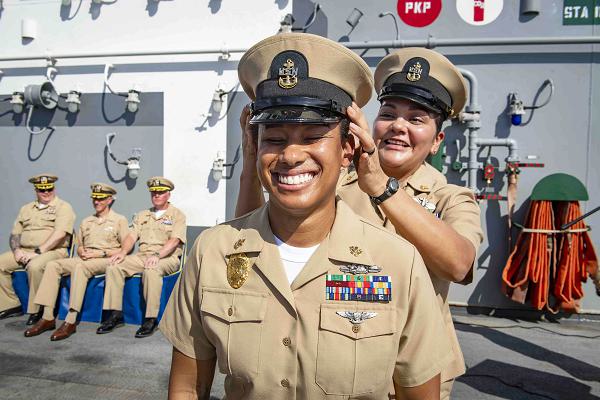
Pacific Ocean. (October 9, 2024): Senior NCOs are the essential link between officers and lower enlisted troops who are both supervisors and advocates. In this photo by Petty Officer 2nd Class Connor Burns, Chief Petty Officer Krystal Jones-Bostic receives her combination cover during a chief petty officer pinning ceremony aboard the USS Boxer. Jones-Bostic, a native of Detroit, joins the approximately 30,000 chief, senior chief, and master chief petty officers in the Navy. A chief petty officer is an E-7 enlisted rank that was established by the Navy in 1893 and is equivalent to a gunnery sergeant in the Marine Corps, a sergeant first class in the Army, and a master sergeant in the Air Force.
In the Navy and Coast Guard, advancement to chief petty officer not only carries requirements for time in service and superior evaluation scores, but candidates are also subject to peer review. This means a chief petty officer can only advance after review by a selection board of serving master chiefs. This is important in that superior test scores are not enough, a candidate must have the confidence of their fellow leaders.
With rank comes responsibility and these professionals are given more responsibilities than any other enlisted rank in the world. On average, it takes about thirteen years of active service to qualify for E-7 and this includes completing basic training, advancing through the enlisted ranks, and meeting the necessary requirements for promotion to chief petty officer (There are three chief petty officer ranks: chief petty officer, senior chief petty officer, and master chief petty officer).
Chiefs are recognized for exemplary technical expertise within their profession, superior administrative skills, and strong leadership ability. Most importantly, chiefs bridge the gap between officers and enlisted personnel, acting as supervisors as well as advocates for their Sailors.
While only 2.5% of the Navy, senior chief petty officers are the vital link between rank-and-file Sailors and the officers who lead them which is the backbone for a successful military organization.


